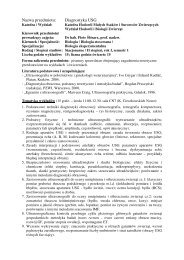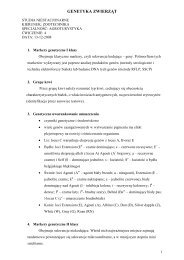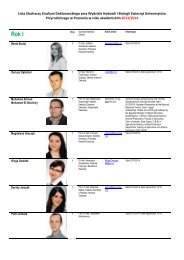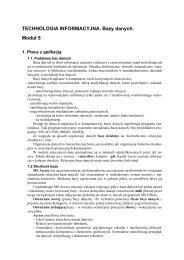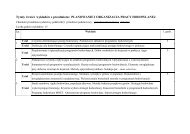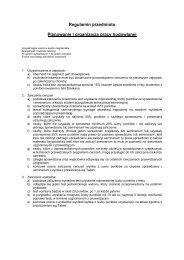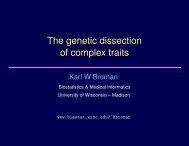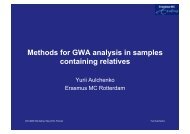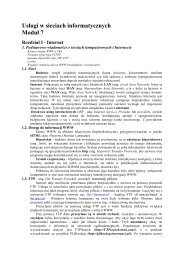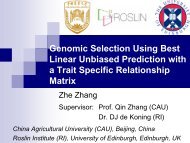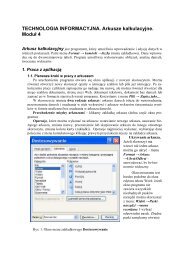The book of abstracts is available. - PoznaÅ
The book of abstracts is available. - PoznaÅ
The book of abstracts is available. - PoznaÅ
You also want an ePaper? Increase the reach of your titles
YUMPU automatically turns print PDFs into web optimized ePapers that Google loves.
14 th QTL-MAS Workshop, Poznań University <strong>of</strong> Life Sciences, Poland 2010Partial least square regression applied to the QTL-MAS 2010 datasetAlbart Coster 1 , Mario P. L. Calus 2∗1Animal Breeding and Genomics Centre, Wageningen University, Wageningen,<strong>The</strong> Netherlands2Animal Breeding and Genomics Centre, Wageningen UR Livestock Research,Lelystad, <strong>The</strong> Netherlands∗ Presenting author: Mario Calus, email: mario.calus@wur.nlBackground. Partial least square regression (PLSR) was used to analyze the data <strong>of</strong> theQTL-MAS 2010 workshop. <strong>The</strong> objectives <strong>of</strong> th<strong>is</strong> analys<strong>is</strong> were to identify genomic regionsaffecting either one <strong>of</strong> the two simulated traits and to accurately predict breeding values forthe two traits <strong>of</strong> the simulated individuals. PLSR was especially appropriate for the analys<strong>is</strong> <strong>of</strong>these data because it enables to simultaneously fit several traits to the large number <strong>of</strong>markers in the data.Results. A preliminary analys<strong>is</strong> showed that the two simulated traits were phenotypically andgenetically correlated. Consequently, the data for the two traits were analyzed jointly in PLSRfor each chromosome independently. Regression coefficients estimated for the markers wereused to calculate the variance <strong>of</strong> each marker and QTL inference was based on local maxima<strong>of</strong> a smoothed line traced through these variances. In th<strong>is</strong> way, 23 QTL for the continuoustrait were found and 30 for the d<strong>is</strong>crete trait. <strong>The</strong>re was clear evidence for pleiotropic QTL onchromosomes 1 and 3. Bootstrapping was used to calculate empirical standard errors <strong>of</strong> theregression coefficients and the 2000 most significant markers were used in a second PLSRmodel which was used to estimate breeding values <strong>of</strong> the individuals based on the markers.Breeding values estimated with th<strong>is</strong> method correlated well (correlation > 0.50) with theobserved phenotypes <strong>of</strong> both traits.Conclusions. Results <strong>of</strong> th<strong>is</strong> analys<strong>is</strong> show the viability <strong>of</strong> PLSR for QTL analys<strong>is</strong> <strong>of</strong>multivariate models and for estimating breeding values using markers. <strong>The</strong> methods used inth<strong>is</strong> study will need to be compared to the other methods used in th<strong>is</strong> workshop.17



